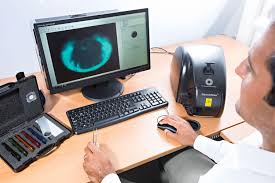Raw Material Procurement Manager
TOR: INFORMATION TECHNOLOGY- INFORMATION TECHNOLOGY ENABLED SERVICES
(IT-ITES)ces Helpdesk Attendant
SECTOR: GEMS & JEWELLERY
SUB-SECTOR: Handmade gold and gems-set jewellery
OCCUPATION: Inventory Management
REFERENCE ID: G&J/Q0301
ALIGNED TO: NCO-2004/ NIL
Raw Material Procurement Manager: The Raw Material Procurement Manager
is responsible for procuring precious metals including gold, alloys, components
of gold jewellery, gemstones, other consumables and tools for jewellery
making.
Brief Job Description: The individual at work procures raw gold from banks,
bullion dealers for anticipated orders or placed by customers, in order to
execute the production planning and maintain profitability. The individual is
also responsible for procurement of components for jewellery, gemstones,
other consumables and tools required for jewellery making.
Personal Attributes: The job requires the individual to have: attention to
details; ability to develop interpersonal relations and negotiate prices; have
sharp memory and willingness to travel.
Unit Code G&J /N0303
Unit Title
(Task) Procure raw materials for jewellery making
Description This OS unit is about procuring precious metals, alloys, components, gemstones,
consumables and tools required for jewellery manufacturing, while keeping market
value of products sold and margin targets of the company
Scope This unit/task covers the following:
Study and understand the supply-side market
Assess the raw material requirement for production
Plan and procure precious metal including gold
Plan and procure components, gemstones, consumables and tools
Ensure delivery of quality product
Maintain record of materials
To be competent, the user/individual on the job must be able to:
PC1. study different vendors in the domestic and international market and their
offerings
PC2. make a database of vendors for various consumables
PC3. shortlist and make a list of preferred vendors based on quality, type of
products offered, design, price, etc.
PC4. understand the production plan for the period and related consumables
PC5. understand the products which can be made in-house and those which have
to be procured from outside
PC6. understand the requirement of precious-metal, alloys, components and
gemstones
PC7. check the raw materials available in the company
PC8. understand the availability and requirement of tools and machines
PC9. assess the market scenario accurately
PC10. identify the best vendors that suit the company’s objectives and
manufacturing requirement
PC11. identify vendor who provides quality product at best price for the organisation
Procurement
planning
To be competent, the user/individual on the job must be able to:
PC12. follow the raw precious metals procurement policy of the organisation
PC13. assess precious metal available from refining and new procurements to be
made
PC14. procure gold, silver and platinum bars from banks or bullion dealers
PC15. ensure the gold is assayed for quality and Karatage
PC16. procure gold from the jeweller (customer) and get it assayed
PC17. follow gold handling and logistics norms as per company policy
PC18. prepare a consolidated delivery order
PC19. check availability and requirement from all departments
PC20. check tools and spares requirement from all departments
PC21. maintain record of material availability and requirement after collecting details
from sectional supervisor
PC22. track the usage of consumables and order them appropriately
Procurement of
materials
To be competent, the user/individual on the job must be able to:
PC23. understand the bill of materials for the production plan
PC24. assess the market demand-supply scenario
PC25. understand the availability of required materials from the vendor
PC26. look for alternative vendor if the preferred vendor do not have required
materials
PC27. negotiate quality versus pricing
PC28. place procurement order with the vendor for delivery of goods
PC29. place the order with desired details such as quality expected, product
specification
PC30. prepare contract on details such as payment mode, delivery date, credit period
PC31. place the order with the right vendor and ensure that the terms and conditions
of the transaction is as per company policy
PC32. ensure that products are procured at desired specification and quality
PC33. ensure that there is no delay in delivery of products
Achieving
productivity
To be competent, the user/individual on the job must be able to:
PC34. send products for quality check when received
PC35. ensure the number and quality of products are appropriate
PC36. ensure the correctness of products received from appropriate department
PC37. ensure that the transaction results in profit for the company
PC38. ensure that there is no production delay due to non availability of raw
materials and consumables
The individual on the job needs to know and understand:
KA1. company’s policies on: acceptable limits of precious-metal loss; delivery
timelines; safety and hazards; integrity; and personnel management
KA2. work flow involved in company’s jewellery manufacturing process and time
required to complete each stage
KA3. importance of the individual’s role in the workflow
KA4. company’s procurement and company’s accounting policies
KA5. reporting structure
B. Technical
Knowledge
The user/individual on the job needs to know and understand:
KB1. jewellery manufacturing process
KB2. different types of precious metals and alloys and Karatage
KB3. different types of gemstones, supply sources, major buyers and their
properties
KB4. precious metal price movements and market demand-supply scenario
KB5. foreign exchange rate movement and hedging requirement
KB6. assaying and quality standards
KB7. different types of components used in jewellery example: hollow balls
KB8. different consumables required in various stages of jewellery making
KB9. tools, equipments and spares required for jewellery making
KB10. inventory management techniques and software
KB11. general industry trends such as seasonality effects, gold price and festivals to
estimate demand
KB12. key markets of consumables across the region and country
KB13. vendor management
KB14. how to maintain records of materials, tools and spares
KB15. basic finance, budgeting and accounting
KB16. banks, their nominated agencies and licensed players
KB17. import-export procedures and documentation, duties, charges and
commissions
KB18. audit procedures and requirements
KB19. bulk buying process and drawing up contract
KB20. use of Internet for research
KB21. commerce related terms prevalent in the market
The user/individual on the job needs to know and understand how:
SA1. to conduct market research
SA2. to read material requirement documents
SA3. to prepare delivery order
SA4. to read invoice details from vendor
SA5. to draw up contracts
SA6. to read and understand Government regulations on different raw materials
Communication skills
The user/individual on the job needs to know and understand how:
SA7. to communicate effectively with seniors and colleagues
SA8. to communicate effectively with vendors
B. Professional Skills Calculation skills
The user/individual on the job needs to know and understand how:
SB1. to quickly calculate whether the transaction could result in profit for the
company
SB2. to understand the number of materials and consumables required
Decision-making skills
The user/individual on the job needs to know and understand:
SB3. how to decide on vendors and their capabilities
SB4. availability versus requirement of raw materials and the right time to procure
them for anticipated demand
SB5. correct price for the quality and quantity of raw materials available
Negotiation skills
The user/individual on the job needs to know and understand how:
SB6. to negotiate with the vendor to get the materials at best price and quality
SB7. to arrive at accurate costing
Reflective thinking
The user/individual on the job needs to know and understand how:
SB8. improve work processes for greater productivity
SB9. avoid process delays
Unit Code G&J/N9910
Unit Title
(Task) Respect IPR of company as well as competitors
Description This OS unit is about maintaining company’s IPR and avoiding infringement on
copyright of others
Scope This unit/task covers the following:
Protect company’s Intellectual Property Rights (IPR)
Avoid infringement to copyright of other companies
To be competent, the user/individual on the job must be able to:
PC1. prevent leak of new designs to competitors by reporting on time
PC2. spot any infringement of company’s product or design patents
PC3. report IPR violations observed in the market, to supervisor or company heads
PC4. read copyright clause of the material published on the internet and any other
printed material
PC5. consult supervisor or senior management when in doubt about using publicly
available information
PC6. report any infringement observed in the company
PC7. spot plagiarism and report
PC8. understand rationale of patents and IPR
PC9. avoid being involved in IPR violations
Knowledge and Understanding (K)
A. Organizational
Context
The individual on the job needs to know and understand:
KA1. company’s policies on IPR, plagiarism and order leaks
KA2. company’s patented products
KA3. market trends and company’s unique product range
KA4. reporting structure
B. Technical
Knowledge
The individual on the job needs to know and understand:
KB1. basics of patents and IPR laws
KB2. how IPR protection is important for competitiveness of a company
Skills (S) [Optional]
A. Core Skills/
Generic Skills
Communication skills
The user/individual on the job needs to know and understand how:
SA1. to effectively communicate any observed IPR violations or design leaks
B. Professional Skills Decision making
The user/individual on the job needs to know and understand when and how:
SB1. to report sources of IPR violations
The user/individual on the job needs to know and understand how:
SB2. to learn from past mistakes and report IPR violations on time
Critical thinking
The user/individual on the job needs to know and understand how:
SB3. to spot signs of violations and alert authorities in time
Unit Code G&J/N9915
Unit Title
(Task) Interact with colleagues, customers and vendors
Description This OS unit is about communicating with colleagues, customers, vendors and
Government departments in order to maintain smooth and hazard-free work flow
Scope This unit/task covers the following:
Interact with Seniors
Interact with colleagues
Interact with Government departments, auditors, customers and/or vendors
To be competent, the user/individual on the job must be able to:
PC1. receive instructions, plans and targets
PC2. devise strategy for customer or vendor management
PC3. understand the deliverables to customers
PC4. understand the contracts, regulatory and audit requirements
PC5. company’s procurement and production norms
PC6. communicate any potential hazards or expected disruptions
PC7. comply with company policy and rule
PC8. comply with Government regulations
PC9. deliver quality work on time as required by reporting any anticipated reasons
for delays
Interactions with
colleagues,
customers and/or
vendors
To be competent, the user/individual on the job must be able to:
PC10. work as a team by understanding their requirements
PC11. share skills and train
PC12. communicate and discuss work flow related difficulties in order to find
solutions with mutual agreement
PC13. receive feedback and address concerns in order to complete work on time
PC14. put team over individual goals
PC15. resolve conflicts and meet requirements to the customer’s/ colleagues’ /
vendor’s satisfaction
PC16. act on contract, audit or Government related queries and legal disputes
Interactions with
Government
departments,
auditors and others
To be competent, the user/individual on the job must be able to:
PC17. assess their requirements and devise strategy accordingly
PC18. to communicate company’s quality, quantity and contractual requirements
PC19. select the best alternative that suits the customer, the vendor and the company
PC20. keep oneself update on market movements and regulatory changes
PC21. comply with audit and documentation requirements
The individual on the job needs to know and understand:
KA1. company’s policies on personnel management
KA2. work flow involved in company’s jewellery manufacturing process
KA3. importance of the individual’s role in the workflow
KA4. reporting structure
B. Technical
Knowledge
The individual on the job needs to know and understand:
KB1. how to communicate effectively
KB2. how to build team coordination
KB3. how to develop networks across the market
Skills (S) [Optional]
A. Core Skills/
Generic Skills
Teamwork and some multitasking
The individual on the job needs to know and understand how:
SA1. to motivate team to work
SA2. to convince seniors about significant process changes
SA3. to share work load as required
SA4. to deliver product to next work process on time
B. Professional Skills Decision making
The individual on the job needs to know and understand:
SB1. how to report potential areas of disruptions to work process
SB2. when to report to senior and when to deal with a colleague depending on the
type of concern
SB3. when to escalate customer or vendor related problems to seniors
Reflective thinking
The individual on the job needs to know and understand:
SB4. how to improve work process
Critical thinking
The individual on the job needs to know and understand:
SB5. how to spot process disruptions and delays
Unit Code G&J/N9914
Unit Title
(Task) Work towards having a safe work environment
Description This OS unit is about being aware of and communicating potential hazards and
dangers of accidents on the job
Scope This unit/task covers the following:
Understand potential sources of accidents
Communicate to reporting supervisor about hazards in time
Performance Criteria
Understanding of
potential sources of
accidents and
communicating
To be competent, the user/individual on the job must be able to:
PC1. avoid accidents related to use of potentially dangerous chemicals, gas torches,
sharp tools and hazards from machines
PC2. suggest process flow improvements to reduce anticipated or repetitive hazards
PC3. report mishandling of tools, machines or hazardous materials
PC4. identify electrical problems that could result in accident
PC5. spot and report potential hazards on time
PC6. follow company policy and rules regarding hazardous materials
PC7. deliver quality work on time as required by reporting any anticipated reasons
for delays
Knowledge and Understanding (K)
A. Organizational
Context
(Knowledge of the
company /
organization and
its processes)
The individual on the job needs to know and understand:
KA1. company’s policies on handling: harmful chemicals and sharp tools, safety and
hazards of machines, fire safety and, disposal of harmful chemicals and
materials
KA2. work flow involved in company’s jewellery manufacturing process
KA3. importance of the individual’s role in the workflow
KA4. reporting structure
B. Technical
Knowledge
The individual on the job needs to know and understand:
KB1. how different chemicals react and what could be the danger from them
KB2. how to use machines and tools without causing bodily harm
KB3. fire safety education
KB4. disposal of hazardous chemicals, tools and materials by following prescribed
environmental norms or as per company policy
Skills (S) [Optional]
A. Core Skills/
Generic Skills
Communication skills
The individual on the job needs to know and understand how:
SA1. to effectively communicate the danger
The individual on the job needs to know and understand:
SB1. importance of reporting potential sources of danger
SB2. appropriate actions to be taken in the event of an accident
SB3. process for disposing of hazardous materials, safely and following
environmental guidelines
Reflective thinking
The individual on the job needs to know and understand how:
SB4. to learn from past mistakes regarding use of hazardous machines or
chemicals or gas torches
Critical thinking
The individual on the job needs to know and understand:
SB5. how to spot danger
SB6. procedures to follow in the event of a fire or other hazard
Keywords /Terms Description
Sector Sector is a conglomeration of different business operations having similar
business and interests. It may also be defined as a distinct subset of the
economy whose components share similar characteristics and interests.
Sub-sector Sub-sector is derived from a further breakdown based on the
characteristics and interests of its components.
Occupation Occupation is a set of job roles, which perform similar/ related set of
functions in an industry.
Function Function is an activity necessary for achieving the key purpose of the
sector, occupation, or an area of work, which can be carried out by a
person or a group of persons. Functions are identified through functional
analysis and form the basis of OS.
Sub-function Sub-functions are sub-activities essential to fulfil the achieving the
objectives of the function.
Job role Job role defines a unique set of functions that together form a unique
employment opportunity in an organisation.
Occupational Standards
(OS)
OS specify the standards of performance an individual must achieve
when carrying out a function in the workplace, together with the
knowledge and understanding they need to meet that standard
consistently. Occupational Standards are applicable both in the Indian
and global contexts.
Performance Criteria Performance criteria are statements that together specify the standard of
performance required when carrying out a task.
National Occupational
Standards (OS)
NOS are occupational standards which apply uniquely in the Indian
context.
Qualifications Pack (QP) QP comprises the set of OS, together with the educational, training and
other criteria required to perform a job role. A QP is assigned a unique
qualifications pack code.
Unit Code Unit code is a unique identifier for an Occupational Standard, which is
denoted by an ‘N’
Unit Title Unit title gives a clear overall statement about what the incumbent
should be able to do.
Description Description gives a short summary of the unit content. This would be
helpful to anyone searching on a database to verify that this is the
appropriate OS they are looking for.
Scope Scope is a set of statements specifying the range of variables that an
individual may have to deal with in carrying out the function which have
a critical impact on quality of performance required.
Knowledge and
Understanding
Knowledge and understanding are statements which together specify the
technical, generic, professional and organisational specific knowledge
that an individual needs in order to perform to the required standard.
Organisational Context Organisational context includes the way the organisation is structured
and how it operates, including the extent of operative knowledge
managers have of their relevant areas of responsibility.
Technical Knowledge Technical knowledge is the specific knowledge needed to accomplish
specific designated responsibilities.
Core skills or generic skills are a group of skills that are the key to learning
and working in today’s world. These skills are typically needed in any
work environment in today’s world. These skills are typically needed in
any work environment. In the context of the OS, these include
communication related skills that are applicable to most job roles.
Keywords /Terms Description
IPR Intellectual Property Rights
NOS National Occupational Standard(s)
NVQF National Vocational Qualifications Framework
NSQF National Qualifications Framework
NVEQF National Vocational Education Qualifications Framework
Acronyms
QP Qualifications Pack









